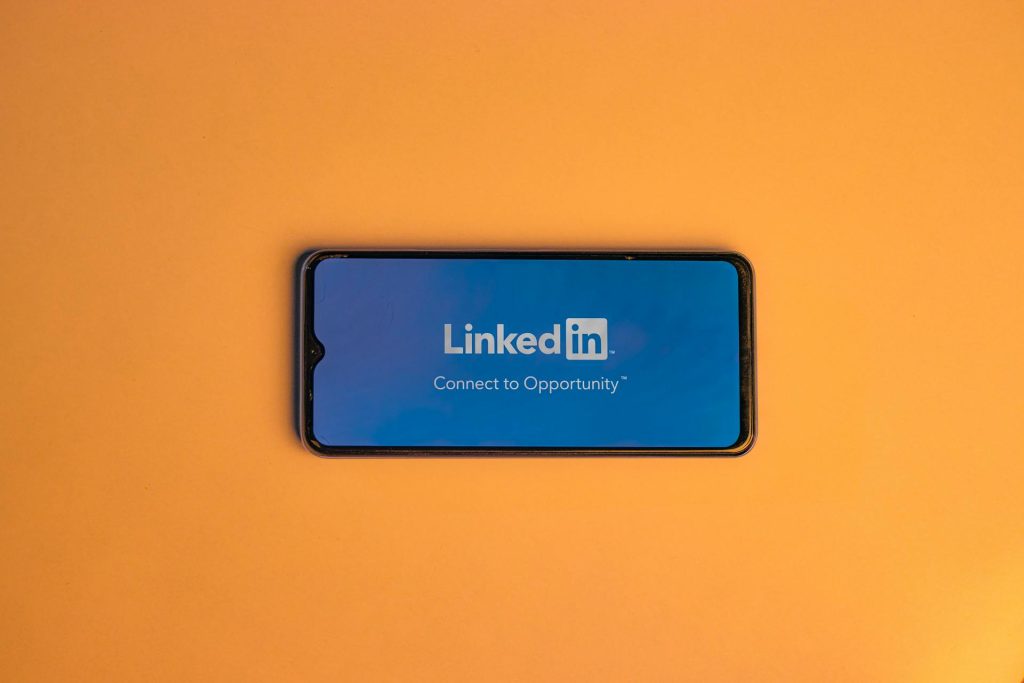Using X For Your Brand Marketing

In today’s digital age, having a robust social media presence is crucial for any brand. With its fast-paced nature and engaged user base, X (formerly Twitter) offers a unique platform to connect with your audience, build brand awareness, and drive results. But how do you leverage this platform effectively for your brand marketing? This post dives into the world of X marketing, equipping you with the knowledge and strategies to craft a winning campaign. Why Twitter? The Power of the Tweet Twitter boasts over 217 million daily active users, making it a vibrant hub for conversations and real-time engagement. Here’s what makes Twitter a powerful tool for brands: Real-time connection: Twitter allows you to participate in ongoing conversations, respond to customer inquiries promptly, and provide real-time updates. This fosters a sense of connection and builds trust with your audience. Brand voice development: Unlike other platforms with character limitations, Twitter allows you to showcase your brand’s personality through witty captions, informative threads, and engaging visuals. Community building: Hashtags and Twitter chats help you connect with like-minded individuals and build a strong brand community. Trend awareness: Twitter is an excellent platform for staying updated on current trends and industry discussions. You can leverage trending topics to create relevant content and connect with a broader audience. Influencer marketing: Partnering with relevant influencers on Twitter can significantly expand your reach and brand awareness. Crafting Your Twitter Marketing Strategy: A Step-by-Step Guide Building a successful Twitter marketing strategy goes beyond simply creating a profile and posting updates. Here’s a roadmap to guide you: Define Your Goals: What do you hope to achieve with Twitter? Do you want to increase brand awareness, drive website traffic, generate leads, or boost customer service? Having clear goals will help tailor your content and measure success. Know Your Audience: Who are you trying to reach on Twitter? Understanding your target audience’s demographics, interests, and online behaviour is crucial for crafting relevant content. Optimise Your Profile: Your Twitter profile is your digital storefront. Make sure it’s visually appealing with a transparent brand logo, a high-quality cover photo, and a bio that succinctly communicates your brand essence. Include a link to your website and relevant keywords to enhance discoverability. Content is King (and Queen): The heart of your Twitter strategy lies in the content you create. Here are some tips: Variety is critical: Mix your content with informative tweets, industry insights, customer testimonials, polls, and engaging visuals like infographics and short videos. Post consistently: Develop a content calendar and schedule regular tweets to stay top-of-mind with your audience. Embrace storytelling: People connect with stories. Use Twitter to share the human side of your brand and showcase your company culture. Jump on trends: To increase visibility while maintaining your brand voice, participate in trending conversations and hashtags. Use Twitter threads: These allow you to share longer-form content and delve deeper into topics. Engage and Interact: Twitter thrives on conversation. Respond to comments and mentions promptly, participate in relevant discussions, and use Twitter polls to encourage audience interaction. Leverage Hashtags: Hashtags help categorise your tweets and increase discoverability. Research relevant hashtags within your industry and use a strategic mix of popular and niche hashtags. Run Twitter Ads (Consider Paid Options): Twitter Ads can significantly boost your reach and target specific demographics. Explore Promoted Tweets, Follower Targeting campaigns, and Website Card placements to achieve your marketing goals. Measure and Analyse: Track your Twitter analytics to understand what’s working and what’s not. You can analyse engagement rate, impressions, website clicks, and follower growth to refine your strategy. Most Effective Digital Marketing Strategies Content MarketingContent marketing, a strategy that involves creating and distributing valuable, relevant content, can attract and engage a target audience. This can help businesses establish authority, build trust with their audience, and drive inbound traffic, all of which are crucial for online success. Social Media MarketingSocial media platforms have become powerful marketing channels for businesses to connect with their audience, build brand awareness, and drive engagement. By leveraging platforms like Facebook, Instagram, Twitter, and LinkedIn, companies can share content, interact with followers, run targeted ads, and foster meaningful relationships with their audience. Also Read- 4 TIPS TO HELP YOUR BUSINESS GENERATE MORE CLIENTS VIA SOCIAL MEDIA Search Engine Optimisation (SEO)SEO remains one of the cornerstone strategies in digital marketing. It focuses on optimising a website to rank higher in search engine results pages (SERPs). By optimising website content meta tags and building quality backlinks, businesses can improve their visibility and organic traffic, ultimately boosting their online presence and driving conversions. Additionally, staying updated with the latest SEO trends and algorithms ensures businesses maintain their competitive edge in the digital landscape. Paid AdvertisingPPC advertising, such as Google Ads and social media ads, allows businesses to target specific keywords, demographics, and interests to reach their ideal audience. Companies can drive targeted website traffic and generate leads and conversions by bidding on keywords and paying only when users click on their ads. Influencer MarketingInfluencer marketing involves partnering with influential individuals or brands to promote products or services to their engaged audience. By leveraging the credibility and reach of influencers, businesses can expand their reach, build brand awareness, and drive sales through authentic and trusted recommendations. Email marketingEmail marketing remains a highly effective strategy for nurturing leads, driving conversions, and fostering customer loyalty. With personalised and segmented email campaigns, businesses can deliver relevant content, promotions, and updates directly to their subscribers’ inboxes, driving engagement and conversions. Video MarketingVideo marketing has emerged as a dominant force in digital marketing, with platforms like YouTube, TikTok, and Instagram Reels driving engagement and consumption. You can create compelling and visually appealing videos for your business to convey your brand message, showcase products or services, and connect with your audience on a deeper level. The core principles of reaching your target audience and building meaningful connections remain constant. Combining these powerful strategies, you can create a dynamic digital presence that attracts, engages, and converts. Remember, tailoring your approach to your specific brand
WHAT ARE THE MOST EFFECTIVE DIGITAL MARKETING STRATEGIES

Navigating digital marketing can be daunting, with countless digital platforms and channels available. However, by implementing the right strategies, businesses can amplify their online presence, drive traffic, and convert leads into loyal customers. In this blog, we’ll explore some of the most impactful digital marketing strategies that can help businesses thrive in the digital age. From search engine optimisation (SEO) to social media marketing and beyond, we’ll uncover the tactics that yield results and empower businesses to achieve their marketing goals. Whether you’re a seasoned marketer or just starting your digital journey, these strategies will elevate your brand and drive success, giving you a sense of achievement in your digital marketing efforts. What Is A Digital Marketing Strategy? An effective digital marketing strategy involves utilising various online channels, such as organic search, paid ads, social media, and web-based mediums like websites, to establish a robust online presence and achieve targeted marketing objectives. In creating an effective digital marketing strategy, you should gather information across the business and find out what works well for your business, your target audience, the kind of product or service you’re offering, and so on. Strategy and tactics are not the same thing. Digital marketing tactics are the specific actions you take to implement your digital marketing strategies. These can include posting blog posts, sending emails, hosting webinars, and interviewing industry thought leaders. On the other hand, digital marketing strategy is the overarching plan that guides these tactics and helps you achieve your marketing goals. Tips for Creating an Effective Digital Marketing Strategy Understand Your Customer: it is only possible to build an effective digital marketing strategy by understanding who your buyer is. To create a comprehensive profile of your audience and guide your tactics, you can make use of data and demographics and follow these steps: Identify the channels that fit your key demographicsCommunicate with your customers in a way that resonates with them. In other words, speak their language. Identify their challenges and trigger emotional responsesDevelop buyer personas to tailor content and forecast purchasing behavioursCultivate cultural sensitivityExplore collaborations, including influencer partnershipsEmphasise outcome-driven experiences over product featuresLeverage automation software for precise segmentation and targeted outreach Audit And Assess: Knowing what digital marketing assets you have and use is important. You must conduct an entire channel and content audit. Examine each asset to determine which is most effective and which is not. With this information, you’ll know which needs to be improved or built from scratch. Let’s look at an SEO contempt audit, for example: Crawl the site: Scour the website for all URLs, including blog posts, category pages, and other pertinent sections. Identify gaps: Pinpoint deficiencies. Analyse the list of URLs to uncover any noticeable content gaps aligned with your target audience and campaign goals. SEO insights: Harness SEO expertise. Collaborate with an SEO specialist to evaluate the performance of current URLs and identify fresh opportunities through keyword analysis. Compile data: Organise the findings. Consolidate all gathered data into a spreadsheet for a comprehensive overview. Create tasks: Establish action items. Develop recommendations to enhance existing pages and devise a strategy for crafting new content to address identified gaps. Focus on the OutcomeAmidst the fervour of marketing and product development, it’s easy to become fixated on the product and the associated metrics like revenue. Yet, it’s crucial to maintain sight of the fundamental need that the product satisfies. What truly counts is knowing your target audience and their motivations. To truly grasp the essence of your product or service, you must comprehend the challenges it resolves for consumers. In essence, by highlighting the benefits post-purchase, you reinforce why it’s indispensable in the first place. Assess and ImproveWhen crafting your strategy, it’s crucial to integrate key performance indicators (KPIs) that are aligned with your core business objectives. Establish a structured plan to define your goals and objectives, and then systematically monitor relevant metrics to gain actionable insights. To achieve this, follow these steps:– Avoid fixating on vanity metrics that lack significance for long-term success, such as Facebook likes.– Utilise KPIs to gauge progress but remain adaptable to adjustments as needed.– Implement regular intervals for comprehensive analysis, comprehension, measurement, and reporting.– Learn to isolate critical metrics if certain aspects appear ineffective, allowing for focused optimisation. Most Effective Digital Marketing Strategies Content MarketingContent marketing, a strategy that involves creating and distributing valuable, relevant content, can attract and engage a target audience. This can help businesses establish authority, build trust with their audience, and drive inbound traffic, all of which are crucial for online success. Social Media MarketingSocial media platforms have become powerful marketing channels for businesses to connect with their audience, build brand awareness, and drive engagement. By leveraging platforms like Facebook, Instagram, Twitter, and LinkedIn, companies can share content, interact with followers, run targeted ads, and foster meaningful relationships with their audience. Also Read- 4 TIPS TO HELP YOUR BUSINESS GENERATE MORE CLIENTS VIA SOCIAL MEDIA Search Engine Optimisation (SEO)SEO remains one of the cornerstone strategies in digital marketing. It focuses on optimising a website to rank higher in search engine results pages (SERPs). By optimising website content meta tags and building quality backlinks, businesses can improve their visibility and organic traffic, ultimately boosting their online presence and driving conversions. Additionally, staying updated with the latest SEO trends and algorithms ensures businesses maintain their competitive edge in the digital landscape. Paid AdvertisingPPC advertising, such as Google Ads and social media ads, allows businesses to target specific keywords, demographics, and interests to reach their ideal audience. Companies can drive targeted website traffic and generate leads and conversions by bidding on keywords and paying only when users click on their ads. Influencer MarketingInfluencer marketing involves partnering with influential individuals or brands to promote products or services to their engaged audience. By leveraging the credibility and reach of influencers, businesses can expand their reach, build brand awareness, and drive sales through authentic and trusted recommendations. Email marketingEmail marketing remains a highly effective strategy for nurturing leads, driving conversions, and fostering
Building A Strong Social Media Brand

Building a strong brand is very important for a personal brand or business. In today’s competitive landscape, establishing a distinctive and memorable brand identity is more crucial than ever. Building a strong brand is multifaceted and requires careful planning, strategy, and execution. In this blog, we will explore some strategies for building your strong social media brand, one that will set you apart from the competition. What is a Brand? Branding is creating and managing the overall identity and perception of a product, service, company, or individual. Consciously defining your brand involves strategically crafting and communicating key elements such as the brand’s name, logo, tagline, messaging, visual elements, and overall personality to distinguish it from competitors and resonate with the target audience. Effective branding goes beyond creating a recognisable logo or catchy slogan; it involves shaping the emotional connection, values, and reputation associated with the brand. It aims to evoke specific feelings, perceptions, and associations in consumers’ minds, ultimately influencing their purchasing decisions and loyalty.Branding doesn’t have to be positive, it can also be negative. However, it is important to know that it is better to have no branding than bad branding. Setting your Branding Pillars Brand pillars are the foundational elements that capture the essence of your brand. These elements are your core values, attributes, and principles guiding your brand identity and its actions and communications. When setting your branding pillars, start with establishing your core. This includes your vision, mission and purpose. What are you giving your customers? How are you solving their problem? What do you want to achieve, and how do you want to accomplish that? Target Audience Two parties are involved in any transaction—the giver and the receiver. Understanding your target audience and to whom you’ll communicate is essential. Knowing critical details about your audience, such as their demographics, psychographics, goals, ambitions, expectations, desires, background story, and pain points, will help you tailor your messaging and create a more effective and engaging brand identity. Choosing the Right Channel of Communication We all know this. When creating a social media brand, you must know which channels suit your target audience. Every social media channel has its algorithm. You might have observed that what works well on Instagram does not work on LinkedIn, and the users are quite different. This is because each social media platform, whether LinkedIn, Instagram, Facebook, or X(formerly Twitter) However, more than choosing the right social media platform to communicate is required. You must also understand the algorithm. Understanding the algorithm will help you know how to pass the information or how best to share your content on social media. Here are some things to know about algorithms:Timing: when posting on social media, the time your post is shared is very important. There is certain content that cannot be shared at a certain time. Why is time important? People and the times they get on social media also differ. It is noticed that hours like 1 pm or 2 pm are busy on social media because people who work are on break. It could be 5 pm when most people are on a bus, on the way home. So, timing is very important. Others to consider are:QualityConsistencyOptimisationorganisation Crafting your Content Strategy A robust content strategy is essential for effectively engaging your audience and driving results across all platforms. When we talk about content, it’s not just about written text; it encompasses various mediums, including videos, images, infographics, podcasts, and more. Anything you share on your page contributes to your brand’s content. The quality and relevance of your content speak volumes about your brand and the value you offer to your audience. To ensure your content resonates and thrives, it should embody certain characteristics: 1. Educational: Provide valuable insights, tips, or tutorials that empower your audience and help them learn something new. 2. Informative: Share relevant news, updates, or industry insights that keep your audience informed and engaged. 3. Entertaining: Inject humour, creativity, or storytelling into your content to captivate your audience and leave a lasting impression. 4. Motivational: Inspire and uplift your audience with motivational quotes, success stories, or personal anecdotes that resonate with their aspirations. 5. Controversial: Spark discussions and debate by addressing controversial topics or challenging conventional wisdom within your industry or niche. 6. Engagement-Worthy: Encourage interaction and participation by asking questions, running polls, or hosting contests that invite your audience to engage with your content. Knowing what strategy to use depends on your audience and your story. Utilising Visual Identity Harnessing the power of visual identity is paramount in today’s digital landscape. Studies show that a staggering 80% of visually communicated content is more likely retained by the brain than written or spoken content. Visual elements not only enhance brand recognition but also elevate the perceived value of your brand, making it more memorable in the minds of your audience. Effective branding hinges on becoming top of mind for your target audience. To establish a strong visual identity, consider the following key components: 1. LogoYour logo serves as the cornerstone of your brand identity. It should be unique, memorable, and reflective of your brand’s personality and values. 2. TypographyConsistent typography enhances brand recognition and readability across various platforms. Choose fonts that align with your brand’s tone and message, and maintain font style and size uniformity. 3. Clear Avatar/Cover PhotoYour avatar and cover photo on social media platforms are often the first elements users encounter. Ensure they are visually appealing, high-quality, and accurately represent your brand identity. 4. Design StyleDefine a consistent design style that resonates with your brand’s identity and target audience. Whether minimalist, modern, vintage, or eclectic, stick to a cohesive design aesthetic across all visual elements. 5. Color PaletteColours evoke emotions and play a significant role in brand perception. Select a colour palette that aligns with your brand values and resonates with your target audience. Maintain consistency in colour usage across all brand assets. 6. Layout StyleEstablish a layout style that complements your brand identity and enhances
INCORPORATE LINKEDIN INTO YOUR MARKETING STRATEGY

LinkedIn has over 774 million users worldwide. This makes it one of the top-used social media platforms. Yet underutilised. However, a number of businesses have identified the importance of incorporating LinkedIn into their marketing strategy to build awareness, connections, networks, and revenue. It is a powerful tool, yet only a few people utilise its marketing power for their brands. What Is Linkedin Marketing? For many successful marketing strategies today, LinkedIn plays a very pivotal role. The process of using LinkedIn to make connections, generate leads, improve brand awareness, and foster business relationships and partnerships while also driving traffic to your website is known as LinkedIn marketing. It is now a part of digital marketing, just like Facebook, Instagram or Twitter. LinkedIn isn’t used as a socialisation tool alone but as a tool to market brands to the online world while increasing revenue for that brand. Instead of being intimidated by people’s successful growth, promotions, and completed courses, you can use it to reach your target audience and build brand awareness. Why Do You Need Linkedin Marketing? Regarding social media marketing, what comes to mind first is Facebook, Instagram and Twitter, the most common social media platforms used, which are all good in social media marketing. However, leaving LinkedIn out of your strategy is a way of harming your business. As a professional platform, LinkedIn generates leads 227% more effectively than Facebook and Twitter combined. Here are some benefits of LinkedIn marketing to businesses: Connect To The Right Target AudienceJust like every other social media platform, LinkedIn is also a great way to connect to the right people for your business.Many businesses use LinkedIn, making the platform fit for B2B connections. This is unique because other platforms can’t offer that. With over 700 million professionals, LinkedIn provides access to a niche audience actively engaged in professional pursuits. This extensive network comprises diverse industries, job roles, and expertise levels, creating a niche audience of individuals actively engaged in professional endeavours. For businesses, this means having direct access to decision-makers, industry leaders, and potential collaborators keen on networking, sharing insights, and exploring business opportunities. The platform’s user base facilitates targeted outreach, allowing businesses to tailor their messages to specific professional segments and engage with a relevant and receptive audience. In simple terms, you get to cut through the noise and focus on connections that are of more value to your business. Brand Credibility and AwarenessThe text you have written is well-drafted and reflects the importance of a robust LinkedIn presence for enhancing brand credibility and awareness. A strong LinkedIn profile showcases a business’s commitment to professionalism and industry expertise. It is a digital business card that communicates a brand’s dedication to maintaining a professional image. Differentiating your business from competitors is crucial, and a brand’s core values, mission statement, and business goals play a vital role in achieving this. A well-crafted LinkedIn profile can help businesses showcase their expertise, achievements, and contributions to the industry, enhancing brand credibility and instilling trust among potential clients, partners, and collaborators. In today’s competitive business landscape, a strong LinkedIn presence has become a powerful tool for reinforcing a brand’s credibility and establishing itself as a reputable player in the market. Regular updates, thoughtful engagement, and transparency are key to building a strong LinkedIn presence that enhances brand visibility and awareness. Thought LeadershipDemonstrating thought leadership on LinkedIn can be highly effective for individuals and companies. With a focus on businesses and careers, LinkedIn provides an ideal platform to showcase credentials such as university degrees, professional certifications, and company awards. These credentials can help establish a reputation as a thought leader in a particular field or industry. Individuals and companies can enhance their thought leadership reputation by posting valuable content and comments on the platform. For instance, a logistics company can post an FAQ video featuring its CEO answering common questions related to the field. This kind of content can solidify the company’s reputation as an expert in the industry. Lead Generation LinkedIn serves as a goldmine for lead generation, offering a platform where businesses can connect with decision-makers and potential clients. LinkedIn’s unique position as a professional networking platform transforms it into a goldmine for lead generation. The platform’s user base comprises professionals in various roles, including decision-makers and key influencers within organisations. This provides businesses with a direct avenue to connect with individuals who hold the power to make decisions or influence purchasing choices. Businesses can generate quality leads by strategically engaging with targeted professionals, sharing valuable content, and participating in industry discussions. The ability to nurture relationships within a professional context on LinkedIn enhances the likelihood of converting leads into valuable clients or collaborators. LinkedIn Marketing Best PracticesHere are some tips to help you get the best out of LinkedIn for Marketing Optimise Your Profile: Your LinkedIn profile is your digital storefront. Craft a compelling company profile with a clear logo, concise yet impactful description, and links to your website. This ensures your brand is easily discoverable, reflecting professionalism and a commitment to transparency. Engaging Content Strategy: Keep your audience captivated with a dynamic content strategy. Share regular company updates, milestones, and behind-the-scenes glimpses. Blend these updates with valuable industry insights, utilising multimedia content like images, videos, and infographics for variety and visual appeal. Establish your business as a go-to source of information within your industry. Utilise LinkedIn Ads: Leverage LinkedIn’s advertising features for precise targeting. Reach specific demographics, industries, or job titles aligned with your business objectives. Craft compelling ad campaigns showcasing your offerings, promotions, or key messages. Elevate your brand’s visibility and drive engagement by ensuring your advertisements reach the most relevant and receptive audience. Engage in Groups: Actively participate in relevant LinkedIn groups within your industry. Connect with professionals, share insights, and contribute to discussions. This strategic involvement expands your network, positions your business as an active participant, and fosters relationships, building credibility within your industry community. Regular Updates: Consistency is key to a visible and active LinkedIn presence. Regularly update your
Influencer Marketing in 2024: Trends, Strategies, and Success Secrets

The term “influencer marketing” has been all the rage in the marketing industry for a few years, and its acceptance is growing. The days of running one-size-fits-all ads and pursuing vanity metrics are long gone. Influencer marketing will become an even more potent tool for brands in 2024, given the constantly changing social media landscape and the growing mistrust of traditional advertising. 90% of survey respondents believe influencer marketing to be an effective form of marketing. 67% of brands use Instagram for influencer marketing. However, precisely what is influencer marketing? Influencer marketing is collaborating with people in charge of online communities (influencers) to market your company or goods to their audience. These influencers can range in popularity from micro-influencers in specific niches with devoted, active communities to social media celebrities with millions of followers. How Does it Work? Building Trust and Engagement Effective influencer marketing goes beyond mere endorsements. It’s about leveraging the influencer’s credibility and authenticity to build trust and positive brand associations with their audience. This can be achieved through Creative Content Collaboration: Influencers excel at creatively weaving brand messaging into their content, ensuring a seamless and engaging fusion. This strategy allows for relatability and resonance as influencers authentically express brand values, effectively communicating with a broader audience. Community Building and Advocacy: Influencers go beyond content creation to become brand ambassadors, fostering genuine connections and driving conversations within their communities. By building trust and advocating authentically, influencers create a sense of belonging that enhances the impact of brand messages. Long-Term Partnerships: Moving beyond one-off campaigns, brands cultivate lasting relationships with influencers, ensuring consistent messaging and deeper audience engagement. Sustained collaborations transform influencers into trusted partners, contributing authentically to the brand narrative over time. Long-term partnerships lay the groundwork for genuine and impactful storytelling. Why Is Influencer Marketing Thriving? Cutting Through the Clutter: Influencer marketing thrives by cutting through the clutter of traditional advertising. In a world bombarded by ads, consumers find solace in recommendations from authentic voices they resonate with. As trusted figures, influencers bring credibility to brand messages, fostering a connection that transcends the scepticism often associated with traditional marketing. Hyper-Targeted Reach: One of the key drivers of influencer marketing’s success is its ability to offer hyper-targeted reach. Influencers operate within specific niche communities, allowing brands to access their ideal customers directly. This targeted approach ensures that brand messages resonate with the right audience, creating a more meaningful impact and increasing the likelihood of conversion. Measurable Results: Influencer marketing stands out due to its measurable results. Unlike some traditional marketing approaches, influencer campaigns are backed by advanced analytics that go beyond vanity metrics. Brands can track performance metrics, gaining valuable insights into engagement, reach, and return on investment (ROI). This data-driven approach allows for continuous refinement and optimisation, making influencer marketing a strategic and results-oriented choice for brands. Trends In Influencer Marketing The Rise of Micro-InfluencersOne of the biggest trends in influencer marketing in 2024 is the rise of micro-influencers. These influencers have smaller followings, typically between 10,000 and 50,000 followers. While they may not have the reach of a megastar influencer, micro-influencers often have higher engagement rates with their audience and are seen as more relatable and trustworthy. This is because micro-influencers specialise in a particular niche or area of interest. This allows them to build a loyal following of people who are genuinely interested in what they have to say. When a micro-influencer promotes a product to their audience, it’s seen as a recommendation from a friend or trusted expert rather than a paid endorsement from a celebrity who may not even use the product themselves. The Power of Niche CommunitiesAnother trend driving the growth of influencer marketing is the increasing importance of niche communities. In today’s crowded online world, consumers seek brands that speak to their interests and needs. Niche communities allow brands to connect with these consumers more personally. Influencers active in niche communities can be incredibly valuable brand partners. They can help brands to develop products and marketing campaigns that resonate with their target audience. They can also help brands reach new customers who need to be made aware of their brand. The Future of Influence As we look ahead, it is clear that influencer marketing is here to stay. Brands still need to start using influencer marketing to take advantage of a powerful opportunity to reach new customers and build brand loyalty. However, it is important to remember that influencer marketing is not a silver bullet. To succeed, brands must develop a strategic approach to influencer marketing aligned with their overall marketing goals. Here are a few tips for brands that are considering using influencer marketing in 2024: Focus on micro-influencers and niche communities. Develop authentic relationships with influencers. Go beyond promotions and engage in meaningful conversations with the influencer’s audience to foster lasting brand loyalty. Create content that is relevant and engaging. Explore emerging platforms like TikTok and live streaming to tap into new audiences and content formats. Track your results and measure your ROI. Influencer marketing is not a fad but an evolving force in the digital landscape. By understanding its intricacies, embracing new trends, and aligning it with your broader digital strategy, you can unlock its true potential to build meaningful connections, drive engagement, and achieve sustainable success in online marketing.
